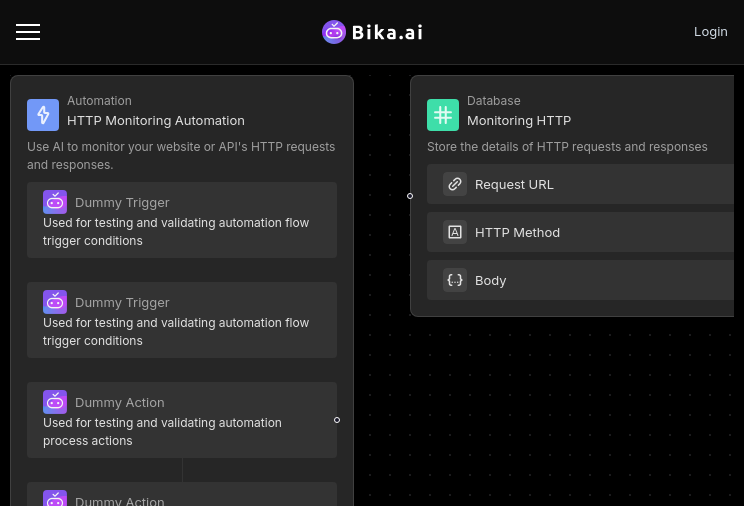
Data Automation with Bika.ai: Unlocking New Potential for HTTP Monitoring in Real-time system status updates
Why is Data Automation Essential in Today's Business Landscape
In today's fast-paced business world, data automation has become indispensable. Real-time system status updates within HTTP Monitoring scenarios are no exception. The growing complexity and volume of data make manual handling increasingly challenging and error-prone. Common pain points include delayed responses, inaccurate data, and the time-consuming nature of manual monitoring.
The HTTP Monitoring template from Bika.ai offers a practical solution to these issues. It enables real-time tracking and immediate notifications, ensuring prompt action when issues arise. This not only saves time but also reduces potential business losses. Free Trial
Introduction to Bika.ai and the HTTP Monitoring Template
Bika.ai is at the forefront of AI-driven automation, revolutionizing the way businesses handle data. Its HTTP Monitoring template is specifically designed to streamline Real-time system status updates.
This template is a ready-to-use solution that simplifies the automation of complex data processes. It eliminates the need for manual intervention and provides a seamless experience for users.

Advantages of Choosing Bika.ai's HTTP Monitoring Template for Data Automation
The benefits of choosing Bika.ai's HTTP Monitoring template for data automation are numerous. Firstly, it offers exceptional efficiency, allowing for real-time monitoring and quick issue detection. Accuracy is another key advantage, ensuring reliable data for informed decision-making.
Cost savings are also significant as it reduces the need for manual labor and potential errors. In the context of Real-time system status updates, these advantages are even more pronounced, providing a competitive edge.
Practical Use Cases of the HTTP Monitoring Template
Let's look at some real-world scenarios where the HTTP Monitoring template shines. For example, in a DevOps environment, it can monitor the performance of web applications in real-time, alerting teams of any anomalies.
In the case of QA Engineers, it helps ensure the quality and stability of APIs during development. Specific examples of Real-time system status updates show how Bika.ai's automation capabilities effectively support these critical processes.
Getting Started with the HTTP Monitoring Template
Getting started with the HTTP Monitoring template is straightforward. The setup process involves a few simple steps. First, install the template through the platform and receive a success message.
Then, enter the URL address and configure the monitoring settings, such as the frequency and trigger conditions. With these steps, you can quickly implement data automation for Real-time system status updates.

Conclusion: Achieving Data Automation Success with the HTTP Monitoring Template
In conclusion, the value of data automation using the HTTP Monitoring template is immense. It simplifies processes, saves time, and optimizes Real-time system status updates. Encourage readers to explore its capabilities and unlock the potential for enhanced efficiency and productivity.

Recommend Reading
- Data Automation with Bika.ai: Unlocking New Potential for WeCom Scheduled Notifications
- Unleash the Power of Automated User-Generated Content Sharing with Bika.ai
- Streamline Your Investment Decisions with Bika.ai's Automated Stock Data Retrieval
- Solve IT Inventory Management Challenges with Bika.ai's Automation Template
- Data Automation with Bika.ai: Unlocking New Potential for Rotating Duty Reminder(Slack) in Slack duty reminder
Recommend AI Automation Templates

Coming soon



Coming soon